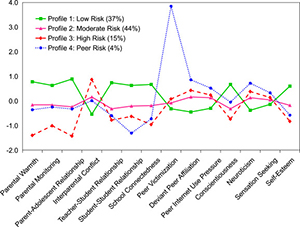Study: Multiple Risk Factors Can Predict Internet Addiction in Adolescents
 |
|
Recent Ph.D. graduate Stella Xian Li has released findings on a study which links multiple risk factors with internet addiction in adolescents.
|
ALBANY, N.Y. (May 26, 2017) – As technology continues to rapidly evolve, the development of internet addiction among adolescents has become as serious public health concern – especially in Asian countries such as China.
But, can researchers actually predict the children who are at risk?
Stella Xian Li, who earned her Ph.D. from UAlbany’s Department of Educational and Counseling Psychology this semester, is part of a collaborative study which links individual and environmental risk factors with internet addiction in adolescents.
Findings were released this month in Computers in Human Behavior.
The study, led by Li Dongping of Central China Normal University, surveyed 998 Chinese adolescents. Participants were asked questions based on 14 different family, school, peer and individual risk factors. For example, “are you satisfied with your relationship with your parents?” and “how many times have you been teased or picked on by others during the past 12 months?”
 |
|
The study grouped participants into four profiles based on 14 different family, school, peer and individual risk factors. (Photo courtesy of Computers in Human Behavior)
|
Participants were grouped into four profiles based on their answers: low risk, moderate risk, high risk and peer risk. Results showed that the higher the risk profile, the greater the probability of internet addiction.
“Few studies have comprehensively investigated the impact of multiple risk factors across domains on adolescent internet addiction,” Li said. “We have provided a novel way to understand how individual and environmental risk factors come together as influencers.”
59 percent of the participants fit into the moderate or high risk profile. Although only four percent of participants fit into the peer risk profile (the highest risk group), those participants were the most likely to experience internet addiction.
Current internet addiction prevention programs tend to focus on only singular risk factors. The team’s findings suggest that targeting a broad array of environmental and individual risk factors may be a better approach.
Li would also like to see researchers investigate how neural, biological and psychological processes are associated with internet addiction in adolescents.
“These findings highlight the importance of multiple risk factor exposure profiles when evaluating adolescent internet addiction,” Li said. “We are encouraging those involved in treatment to consider a multi-pronged approach instead of just targeting singular factors.”
This study was supported by the National Education Sciences Planning Program for young scholars of China.
You can learn more about Li’s research by visiting her website.
![]() For more news, subscribe to UAlbany's RSS headline feeds
For more news, subscribe to UAlbany's RSS headline feeds
A comprehensive public research university, the University at Albany-SUNY offers more than 120 undergraduate majors and minors and 125 master's, doctoral and graduate certificate programs. UAlbany is a leader among all New York State colleges and universities in such diverse fields as atmospheric and environmental sciences, business, education, public health,health sciences, criminal justice, emergency preparedness, engineering and applied sciences, informatics, public administration, social welfare and sociology, taught by an extensive roster of faculty experts. It also offers expanded academic and research opportunities for students through an affiliation with Albany Law School. With a curriculum enhanced by 600 study-abroad opportunities, UAlbany launches great careers.


